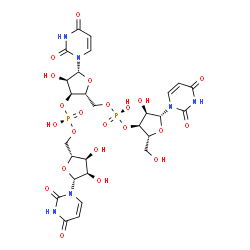Polyuridylylation and processing of transcripts from multiple gene minicircles in chloroplasts of the dinoflagellate Amphidinium carterae.
Adrian C Barbrook, Richard G Dorrell, Jennifer Burrows, Lindsey J Plenderleith, R Ellen R Nisbet, Christopher J Howe
Index: Plant Mol. Biol. 79(4-5) , 347-57, (2012)
Full Text: HTML
Abstract
Although transcription and transcript processing in the chloroplasts of plants have been extensively characterised, the RNA metabolism of other chloroplast lineages across the eukaryotes remains poorly understood. In this paper, we use RT-PCR to study transcription and transcript processing in the chloroplasts of Amphidinium carterae, a model peridinin-containing dinoflagellate. These organisms have a highly unusual chloroplast genome, with genes located on multiple small 'minicircle' elements, and a number of idiosyncratic features of RNA metabolism including transcription via a rolling circle mechanism, and 3' terminal polyuridylylation of transcripts. We demonstrate that transcription occurs in A. carterae via a rolling circle mechanism, as previously shown in the dinoflagellate Heterocapsa, and present evidence for the production of both polycistronic and monocistronic transcripts from A. carterae minicircles, including several regions containing ORFs previously not known to be expressed. We demonstrate the presence of both polyuridylylated and non-polyuridylylated transcripts in A. carterae, and show that polycistronic transcripts can be terminally polyuridylylated. We present a model for RNA metabolism in dinoflagellate chloroplasts where long polycistronic precursors are processed to form mature transcripts. Terminal polyuridylylation may mark transcripts with the correct 3' end.
Related Compounds
| Structure | Name/CAS No. | Molecular Formula | Articles |
|---|---|---|---|
 |
Polyuridylic acid potassium salt
CAS:27416-86-0 |
C18H23N4O14P(C9H11N2O8P)n |
|
Protein universe containing a PUA RNA-binding domain.
2014-01-01 [FEBS J. 281(1) , 74-87, (2014)] |
|
RNA Binds to Tau Fibrils and Sustains Template-Assisted Grow...
2015-08-04 [Biochemistry 54 , 4731-40, (2015)] |
|
Polyadenylation state microarray (PASTA) analysis.
2011-01-01 [Methods Mol. Biol. 759 , 133-48, (2011)] |
|
A facile and specific assay for quantifying microRNA by an o...
2012-01-01 [PLoS ONE 7(10) , e46890, (2012)] |
|
Biophysical characterization of the strong stabilization of ...
2012-01-01 [PLoS ONE 7(5) , e37939, (2012)] |